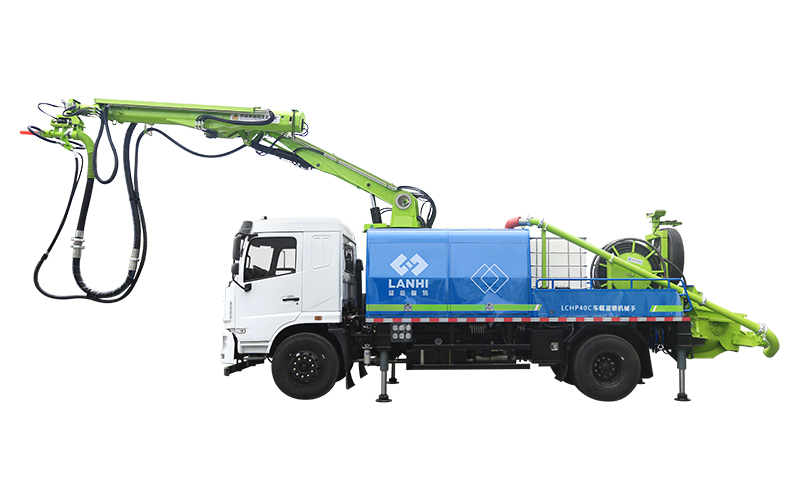The core methods of reducing the rebound rate of wet spraying trolleys involve material optimization, equipment parameter adjustment, process control and intelligent technology application. The following is a comprehensive summary of specific measures:

1. Material optimization
1. Accurate addition of accelerator
① Use an automatic matching system for accelerators to adjust the mixing ratio (such as 0.3%-0.5%) in real time according to the amount of concrete spraying, reduce the waste of accelerators and ensure rapid solidification of concrete, and reduce the rebound caused by delayed solidification.
② Adding nano-scale admixtures (such as silica fume) or coarse synthetic fibers can enhance the cohesiveness of concrete, reduce aggregate separation during spraying, and reduce the rebound rate by 3%-5%.
2. Mix ratio adjustment
① Control the sand ratio within a reasonable range (usually 55%-65%). Too high will easily lead to loose spraying materials, and too low will increase aggregate collision rebound.
② Add fly ash (10%-15%) or slag powder to improve the workability of concrete and reduce spraying resistance.
II. Equipment parameter adjustment
1. Spraying distance and angle
The spraying distance is controlled at 1.0-1.5 meters. If it is too far, the kinetic energy of the concrete will be attenuated. If it is too close, the impact force will be too large and cause rebound. The spraying angle should be as vertical as possible to the sprayed surface. When the inclination angle exceeds 15°, the rebound rate will increase significantly.
2. Robot arm and pumping speed
Use a flexible robot arm (such as a 9-degree-of-freedom robot) with a large coverage range and no blind spots to reduce repeated spraying; the pumping speed and the spraying speed are adjusted synchronously to avoid uneven spraying due to flow fluctuations.
III. Process control
1. Layered spraying and surface treatment
① Spray in 2-3 layers, with a single layer thickness of ≤10cm to avoid the concrete falling off due to excessive thickness.
② Clean the pumice on the sprayed surface and pre-moisten it before spraying to reduce dust adsorption and aggregate rebound.
2. Rebound material management
Clean the rebound material on the ground in time (it is difficult to reuse after hardening) to avoid mixing fresh concrete to affect the quality.
IV. Application of intelligent technology
1. Intelligent sensing and feedback control
① Integrate infrared laser positioning and pressure sensors to monitor the spraying thickness and density in real time, automatically adjust the robot arm movement trajectory and pumping pressure, and control the comprehensive rebound rate to ≤15%.
② The fault diagnosis system automatically warns of pipe blockage or abnormal pressure to reduce spraying interruptions caused by equipment failure.
V. Operation specifications and training
1. Operator skill improvement
Regularly train remote control operation technology, master the robot arm swing speed and spraying trajectory optimization methods, and experienced operators can reduce the rebound rate to less than 10%.
Through the comprehensive application of the above methods, the rebound rate of the wet spraying trolley can be reduced from 30%-40% of traditional dry spraying to less than 10%, while improving construction efficiency by 30%-50%. Specific parameters need to be adjusted according to engineering geology and concrete characteristics.





